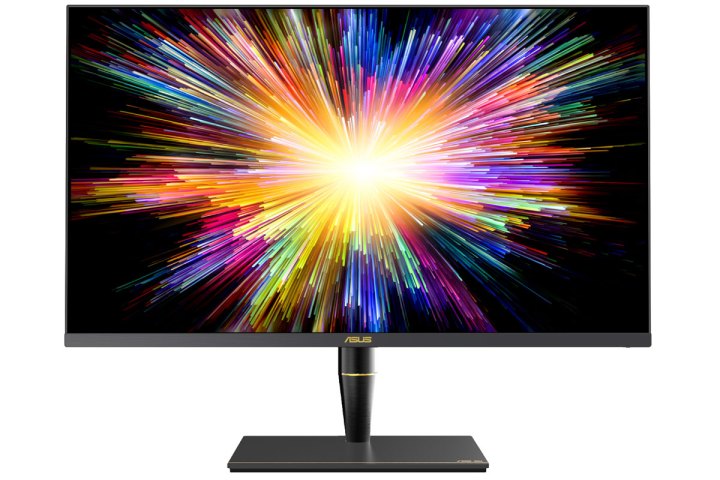
Asus made a colorful splash at this year’s National Association of Broadcasters (NAB) show with the debut of two new professional monitors. They’re the world’s first desktop displays with native support for Dolby Vision, the HDR and wide-color gamut standard that made waves at CES this year when it showed up in a Panasonic television. It makes bright spots much brighter and dark sports much darker — an important and potentially game-changing feature for professional desktop users.
On paper at least, Dolby Vision isn’t dramatically different from other HDR standards like HDR10, but it does have a few unique aspects which could make it a popular choice for concent creators and media consumers. It adds another layer of metadata to an HDR signal that gives the display extra instructions on how to display the content on a scene by scene basis. That is designed to improve color accuracy, contrast, and detailing of an image. In an ideal world, it delivers a picture that is more accurate to the original creator’s vision, and therefore potentially a better-looking image.
The first new Asus display is the ProArt PA32UCX, a 32-inch, 4K display with a peak brightness of an astounding 1,200 nits. It features more than 1,000 zones of mini-LED local dimming control for the most nuanced HDR. Along with Dolby Vision, it also supports HDR-10 and HLG and has support for 10-bit color and quantum dot technology. Its ports include a pair of Thunderbolt 3 connectors, a DisplayPort connector, and three HDMI 2.0 ports.
It also features an attractive frame with a nearly invisible bezel around three of its sides. The base is sturdy but far from expansive, so it won’t take up too much space on your desk.

Asus also debuted a portable OLED display with the same Dolby Vision support in the form of the ProArt PQ22UC. Measuring 21.6-inches diagonally, the display also supports 4K resolution and multiple additional HDR formats. Although not designed with gaming in mind, it does have a response time of 0.1ms, which is complete overkill, but an impressive stat all by itself.
Ports include micro-HDMI and a pair of USB-C connectors. It’s designed as a portable display, with a lightweight and adjustable frame.
Asus has yet to announce release dates or prices for either display. If you want to buy an HDR display right now, check out our guide to the best ones available.



